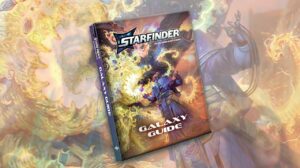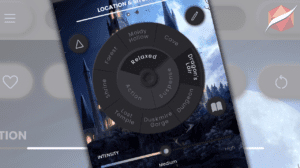Disclosure: Meeple Mountain received a free copy of this product in exchange for an honest, unbiased review. This review is not intended to be an endorsement.
Seventy-one percent of the Earth is covered in water. Given how much of that water is unexplored, there is an above-average chance that sea serpents actually exist. Even if Nessy is little more than a hoax, I’m inclined to believe that there could be some massive beasts swimming around in the deep corners of the ocean. Luckily, all of the sea serpents in Sea Dragons are content with hanging around on the surface, devouring pirate ships to be suitable stewards for their aquatic realm. And you get to control them!
Sea Dragons Overview
In Sea Dragons, players place Dragons in polyomino patterns on a grid-based board with the goal of destroying pirate ships and collecting treasures to earn the title of most dominant in the sea realms. Each player takes a number of single color Dragon Heads, determined by player count, along with the associated color of Dragon Bodies. They also receive 4 coins and a pair of Pattern cards at setup.
On a player’s turn, they will play a Pattern card. There are three types—Small, Medium, and Large—and each size reflects a polyomino shape. As you might expect, the Small cards have smaller polyominos made up of fewer squares in comparison to the Large cards.
Playing a Pattern allows that player to place a Dragon Head and Dragon Bodies to create the corresponding pattern on the game board. Dragons must be placed orthogonally to the central island or to the Dragon of another player, never touching your own Dragons. Each region is 7×7, with one row of Currents in between regions. Placing next to another player’s Dragon grants them 2 coins, so there is some consideration required in games with three or more players so as not to beef up the leader’s coin reserves.
When placing a Dragon piece on a pirate ship token, that player takes the token. These can be cashed in to complete one of the face-up Mission cards, which depict a combination of pirate ship tokens in various colors. These are worth variable levels of points that count towards endgame scoring.
Placing Dragon pieces on the swirly Whirlpool spaces or the wavy Current spaces requires a payment of 2 coins per space. However, placing pieces on a coin space awards a single coin. Placing pieces on a Coral Reef space grants a choice between two Coral Reef cards. These cards remain a secret to the rest of the table until the end of the game (or played) and offer benefits like 4 coins, pirate ship icons that can be spent towards Missions, or hidden Dragons that can count towards majority control of the four sections of the game board.
Play continues until all of the Dragon Heads have been placed, at which point the scores are tallied up. Points are awarded for remaining coins, remaining pirate ship icons, completed Missions, and majority control of each sea section. Whoever has the most points is declared the winner!

Sea Dragons: Pelagic Paralysis
Sea Dragons has incredible table presence after only a few turns. Watching the game board slowly become populated with fantastic Dragons swimming through the water is quite spectacular and was certainly what piqued my interest in the game to begin with.
However, I found that the game quickly spirals into one of pelagic paralysis, analyzing the ever-branching number of options that continues until the number of Dragons reaching a breaking point. The amount of time each turn takes gradually increases until there are so many Dragons that your options become limited like the beginning of the game.
Think of all of the considerations that you have to make. First, find all of the spaces holding Dragons that aren’t your own, plus the starting island spaces. All those spaces are fair game as a starting point for your Dragon placements. Now, consider the orientations of the two Pattern cards in your hand, rotating them in the possible configurations for each of those squares. Then, weigh the cost analysis of any of those arrangements that land on a Current or Whirlpool against the benefits of gaining a coin or a token. Does that token help you achieve any missions? Your turn bends the brain because of all the options you have.
I understand wanting to give players choices, because having an uneventful turn if you could only have a single Pattern card would feel bad. My proposed solution would be to have each Pattern exhibiting one of the symbols for the four regions of the board. On a player’s turn, they have to use both Pattern cards, one to determine which region they must place in, and the other to determine the polyomino shape. This instantly cuts down half of the potential squares on any given turn, which would help considerably in my opinion.
That being said, I do like the rule that forces players to draw their replacement Pattern card from one of the two sizes that their played card wasn’t. For example, if I played a Medium Pattern card on my turn, my replacement card would have to be Small or Large. It prevents people from simply playing Large cards every single turn and filling up the board with the larger sequences of Dragons.
The endgame scoring is a definitive point salad, which only exacerbates my issues with cognitive load in Sea Dragons. I understand that it’s probably not a good strategy to try and win a majority in all four sea regions, but it still becomes an input to your considerations each turn. At the end of the game, the majority winning in each region receives points based on the number of uncovered Whirlpools in that region. Therefore, you can’t necessarily ignore any given region, because you would be enabling a player to gain a boatload of points if left unabated.
I do like the general gameplay loop in Sea Dragons, as the concept of being unable to place Dragons next to your own is a nice twist to the polyomino family of games. There’s a certain rush from having the perfect Pattern card that doesn’t force you to lose any coins while also gaining you multiple pirate ship tokens, coins, or Coral Reef cards.
In giving its players nearly unbridled freedom, Sea Dragons unfortunately traps them in a whirlpool of cyclical analytics that can lead to a parabolic relationship between turn length and number of turns taken. But maybe the designers knew that already, and that’s why the Dragon Bodies are shaped in that way. Although Sea Dragons looks good on the surface, its shortcomings make it little more than an average polyomino game that sinks more than it swims.











Add Comment